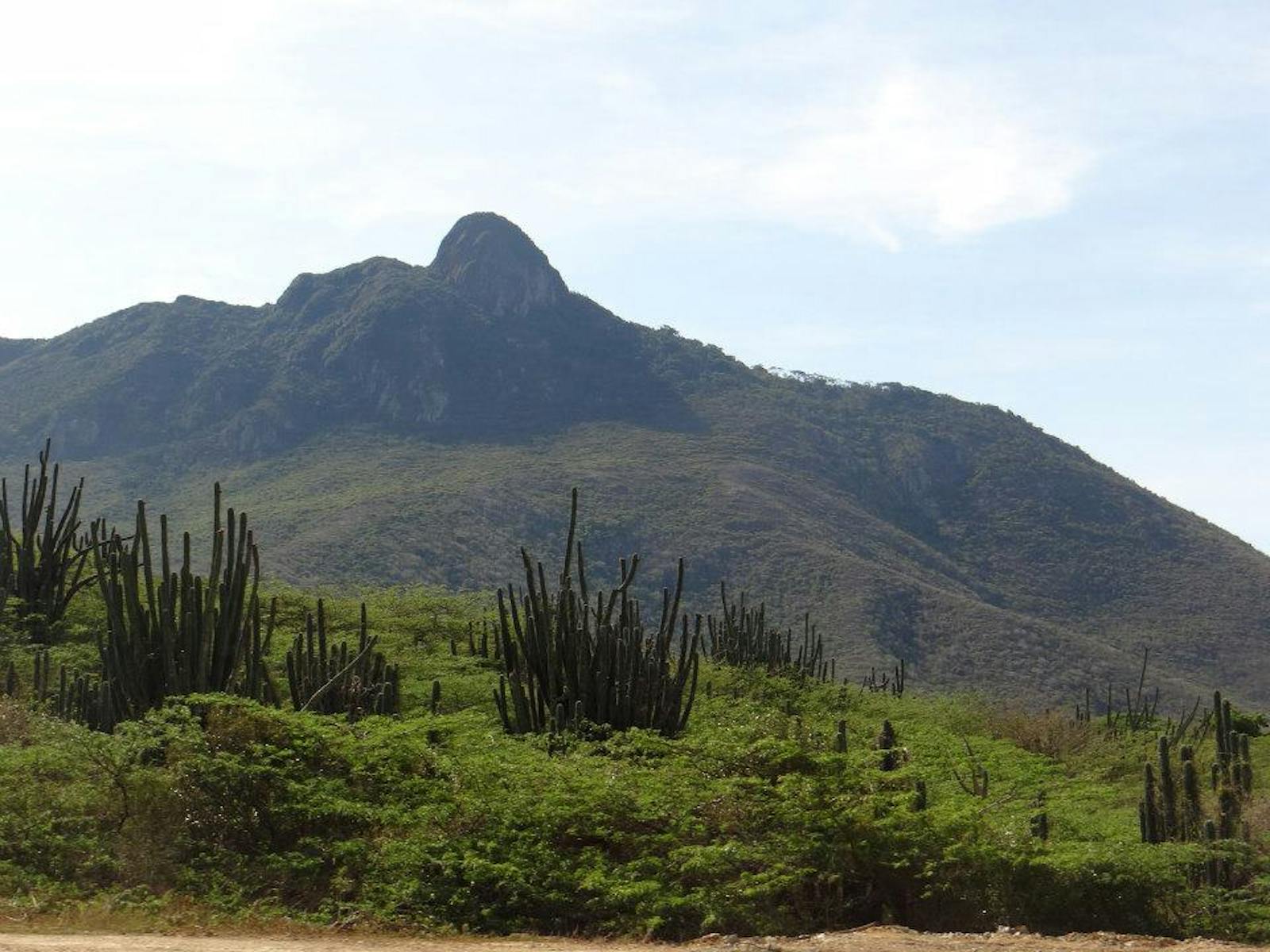Paraguana Xeric Scrub
The ecoregion’s land area is provided in units of 1,000 hectares. The protection goal is the Global Safety Net (GSN1) area for the given ecoregion. The protection level indicates the percentage of the GSN goal that is currently protected on a scale of 0-10.
Bioregion: Venezuelan Coast (NT23)
Realm: Southern America
Ecoregion Size (1000 ha):
1,601
Ecoregion ID:
606
Conservation Target:
25%
Protection Level:
8
States: Venezuela
The ovenbird, a small olive-backed songbird with a striped underbelly, can be found wintering within the Paraguaná xeric scrub ecoregion between trips to its breeding range in the northern forests of the United States and Canada. So named because of its oven-shaped nest, the ovenbird’s small, stocky body is well adapted to withstand the high-velocity northeast trade winds and salty soils that support a distinct composition of species with unique adaptations to survive in these extreme environments.
This ecoregion lies within two of the four existing physiographic provinces, which are characterized by distinct geography and landscape features, in the northwest region of Venezuela. The xeric scrubland of Paraguaná develops on flatlands, with landscape on hills and the piedmont regions. The climate is arid and erratic, with rainfall clustering toward the end of the year. Precipitation in the region varies with topography. On the peninsula, precipitation rarely exceeds 300 mm annually. In the valleys, precipitation varies from 350–1,000 mm in parts of the Andean piedmont.
This variability across the landscape generates contrasting plant communities. Herbaceous-bushy vegetation develops in the seaside plains on complexes of mobile dunes and saline depressions. Moving inland, plants well-adapted to dry environments and deciduous trees develop, alternating with evergreens.
Hilly landscapes toward the interior of the peninsula support a variety of species depending on elevation, including thorny plants, deciduous forest, cloud forest, and shrubland. This ecoregion also includes coastal grasslands, brush, scrubland, and briars. Several rare species, including a very rare bush, the maidenberry, have only been reported in the Morrocoy National Park in the ecoregion.
.jpg)
The flagship species of the Paraguana Xeric Scrub ecoregion is the ovenbird. Image credit: Andrew Weitzel, Creative Commons
Despite being in the tropics, this ecoregion does not have high biodiversity. Nevertheless, native species that inhabit these extreme environments have developed many traits and unique adaptations that allow them to survive. One of the most threatened bird species in Venezuela, the endemic red siskin, is found in this ecoregion. The yellow-shouldered amazon is also vulnerable to extinction, as is the vulnerable dryland mouse opossum.
Amphibians in the region include a species of poison-arrow frog, whose presence is limited to relicts of cloud forest. They are found in enclaves within the ecoregion, where expansion of agriculture and a decline in rainfall and relative humidity threaten the species.
This ecoregion has 28 protected areas with varying levels of protection distributed in two states across northwest Venezuela, Lara and Falcón. Much of the ecoregion lies within Coro Dunes National Park, which has been subject to several non-native species invasions, waste water pollution, and salt extraction found within the park’s jurisdiction.
Urban development, tourism, livestock grazing, and agriculture threaten the integrity of this ecoregion. On the peninsula, in the northern strip in the state of Falcón, and in the state of Lara, wide areas of xeric scrubland have been destroyed to make way for agriculture. Historical timber operations have resulted in destruction of much of the dry forests, of which there are only vestiges in the area of Paraguaná and the valleys of the Lara and Falcón depression.
The priority conservation actions for the next decade will be to: 1) promote the practice of shade-grown cropping; 2) support local sustainable development initiatives; and 3) increase levels of protection within the region’s national parks.
Citations
1. Alarcón, C. 2018. Northern South America: Northernwestern Venezuela. https://www.worldwildlife. org/ecoregions/nt1313. Accessed June 15, 2018.
2. Díaz. 1984. Fisiecología de cuatro especies de cactáceas en condiciones naturales. Tesis de Maestría. Instituto Venezolano de Investigaciones Científicas. Caracas. 150 pp.
3. Huber, O. y C. Alarcón. 1988. Mapa de Vegetacio'n de Venezuela. Escala 1:2.000.000. Ministerio del Ambiente y de los Recursos Naturales Renovables y The Nature Conservancy. Oscar Todtmann Editores. Caracas.
4. Alarcón C. 1990. Relaciones hídricas y nutricionales en árboles caducifolios y Perennifolios de una comunidad calcícola en la península de Paraguaná. Tesis de Maestría. Universidad de los Andes. 167 pp.
5. BirdLife International. 2016. Seiurus aurocapilla. The IUCN Red List of Threatened Species 2016: e.T22721779A94731140. http://dx.doi.org/10.2305/IUCN.UK.2016-3.RLTS.T22721779A94731140.en. Downloaded on 30 August 2



